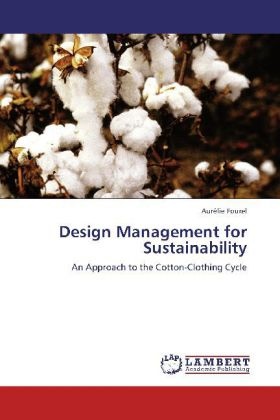Read more
Being a complex industry that involves many stakeholders, the cotton-clothing market faces many issues regarding sustainability. Demanding great amount of resources and requiring many stages before having a t-shirt, the cotton-clothing cycle challenges organisations in terms of environmental and social norms. This paper describes the value of design management for organisations and the concept of sustainability in reference to product development. Reporting on the challenges the cotton-clothing industry faces, the author used the concept of product life cycle to approach the complexity of sustainability in this market. Best practice examples have been analysed in order to gain key insights and recommendations from experts in sustainability were used to compare and find key points to be considered when designing cotton-clothes for sustainability. The model and the checklist that have been created can be used as an integrated method on a systematic basis in product development, but professionals can also adapt or implement the checklist depending on the industry. The checklist facilitates the control over the process and with the model they add value over the product life cycle.
About the author
studied Design Management at the Lucerne University of Applied Sciences and Arts in Switzerland. She is actually working as an Assistant to Bachelor programme at the Lucerne University of Applied Sciences and Arts and is a Designer Freelancer.

